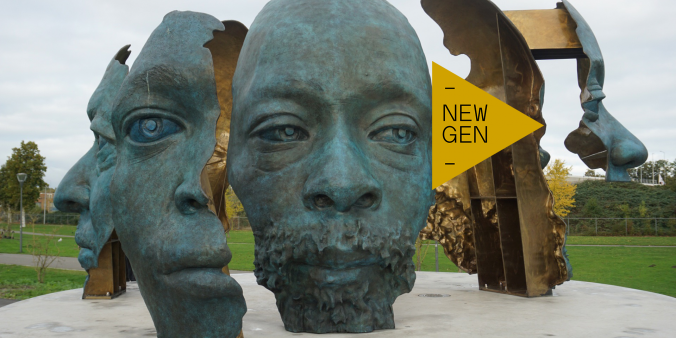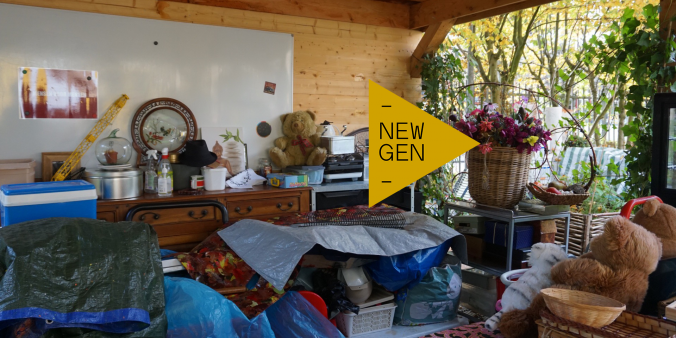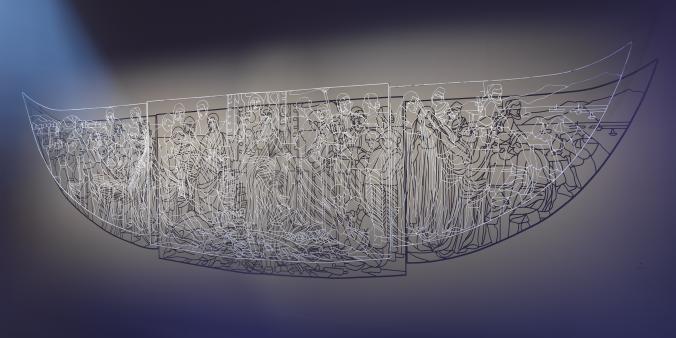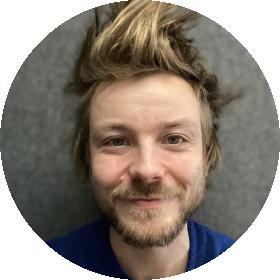
Ahead of the city’s 750th anniversary in 2025, the Amsterdam Museum has launched the collection project Collecting the City: Stories of Amsterdam. DutchCulture and the founding partners of Collecting the City (Amsterdam Museum, OBA, Municipality of Amsterdam, Amsterdam City Archives and the University of Amsterdam) organised a symposium on November 5 and 6 for museum professionals and makers – both local and international – to expand our knowledge about collecting stories and co-creation around the city.
New generation of cultural professionals
For the occasion of the symposium, DutchCulture invited four young international cultural changemakers and storytellers who are actively (re)shaping their home cities – Paris, Madrid, Istanbul and London – from vastly different angles. During the second day of the symposium, our guest speakers each offered surprising new insights about collecting and telling (hi)stories in their professional practices. By offering a platform to their stories, DutchCulture aims to forge new ties and create a springboard for future collaboration. In this article, we reflect with our international guests on their experiences of collecting and connecting in Amsterdam.
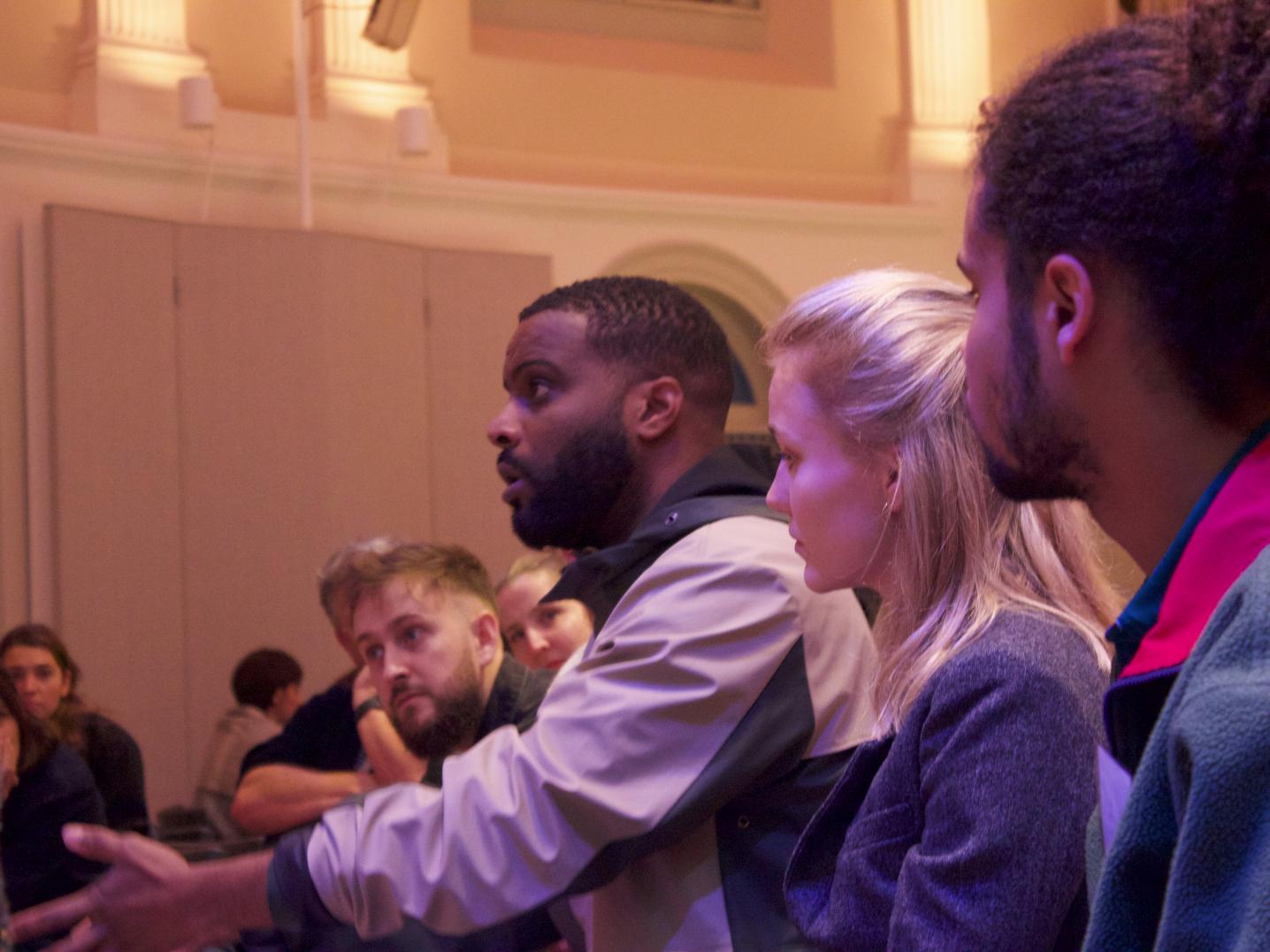
Madrid
Niko Barrena (1993) is an architect, professor and researcher from Madrid. He is the co-founder Memento, which is part of |carnicería, a platform for transdisciplinary research of several art disciplines, aiming to explore new limits and generate cultural devices that provide new ways of building and collecting the city and experiencing art. Barrena’s vision is clear: “Cultural institutions should integrate the understanding and feelings of the community in order to produce a variety of perspectives on the city and its collections.”
Memento is structured around tattooing as a practice and device. Through installations and workshops, Memento proposes a reading of the city starting from the diversity of bodies that inhabit, build and transform it. Barrena speaks about this project with great passion: “We can discover so many stories from skin nailed with ink. In times of digitalisation, mapping tattoos can be a tool to show us the reality we live in. It can help us heal our wounds and evoke new futures, remind us on who we are.”
Paris
The mission of our French guest Kévi Donat, founder of Le Paris Noir walking tours, is to uncover the black history of Paris. He chronicles the connection between the French capital to African countries, the Caribbean and the United States, covering critical themes such as colonisation and immigration as well as literary and political figures of French history. Donat: “In French history, black presence is often dismissed or whitewashed although people of colour have been present in France for centuries. The same goes for women in black history. The discussion about race in France didn’t start just a few years ago, it’s actually been going on for a very long time.”
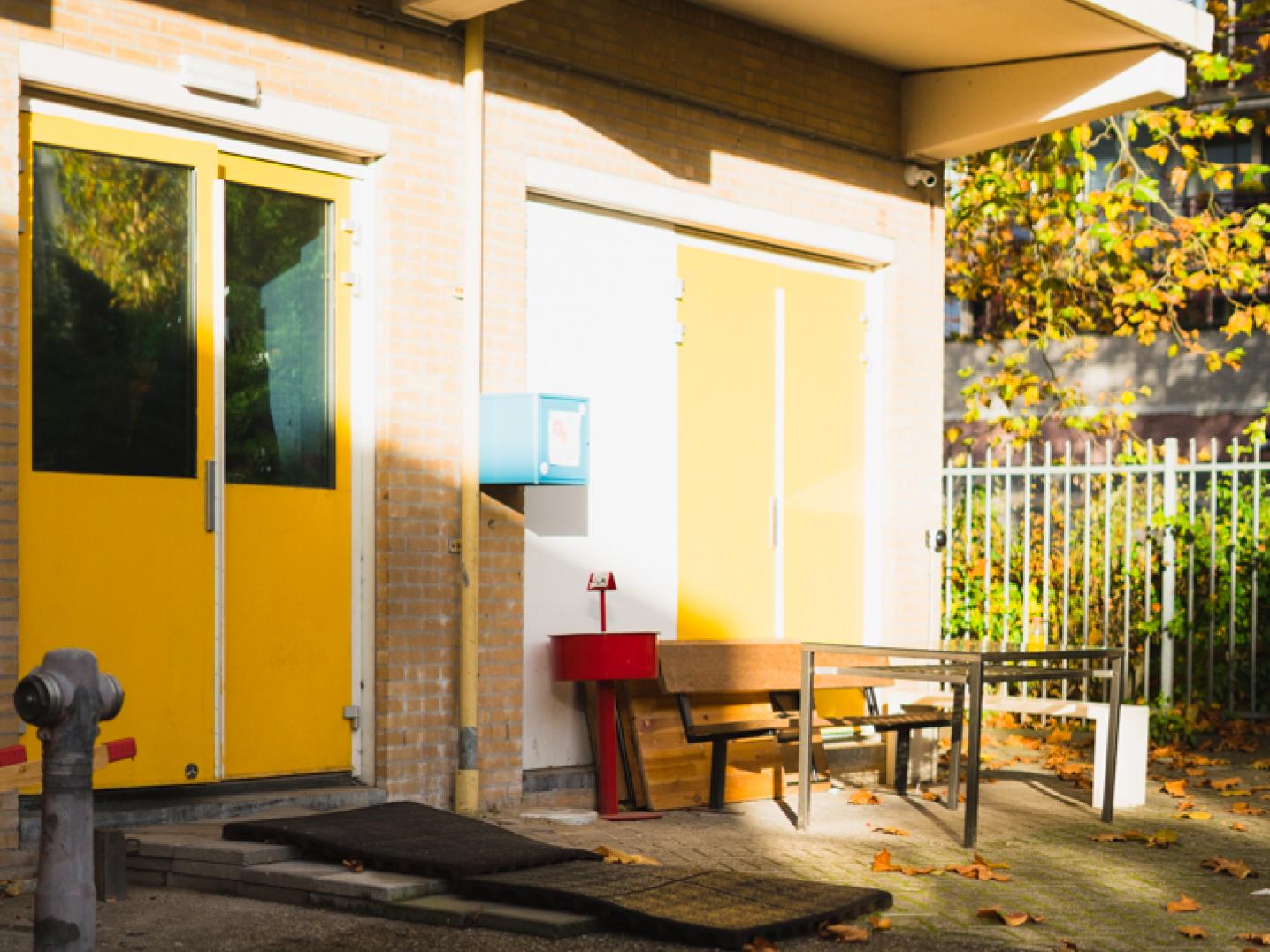
Istanbul
Turkish museum pioneer Irem Alpay (1997) became a founder member of the Young Museum Association in 2021 and was co-translator of the book Future of Museum and Gallery Design. After graduating with a BA degree in History from Middle East Technical University in Ankara in 2019, she started an internship at Rahmi M. Koç Museum Ankara where she worked on several exhibitions. Alpay is now studying for her master’s degree in Archaeology and History of Arts at Koç University while working part-time as a researcher for museum design projects at Mithra Istanbul.
In Turkey, not the larger institutions, but non-governmental and voluntary organisations are the groundbreakers in practices of co-creation and democratic changes in cultural practices, according to Alpay’s experiences. Alpay: “Only recently, I have been witnessing a steady transformation within larger museums as well as the establishments of new museums according to these ideals. I am thrilled to see the future of museums in Turkey as the advocators for co-creation projects and become a part of it myself.”
London
London-based Nathan Twentyman (1999) already has several first-hand experiences with co-creation projects. While he did an Arts Management apprenticeship with the Barbican Centre in London, he worked with charities and cultural organisations aiming to improve the accessibility of the arts, for those who are experiencing financial of physical disadvantages. Besides, he works for a creative business called Livity that missions to build a better with and for the next generation of artists.
Through Livity, Twentyman received various opportunities in the creative industry, such as Emerge, the London version of ‘Museumnacht’. He witnessed the impact of co-creation very closely when he helped the producers during the preparation of the city-wide festival. On 6 November, the Dutch annual Museumnacht took place, right after the Collecting the City symposium. Comparing Emerge to the Museumnacht, Twentyman notices slight differences: “I think London still has a way to go in connecting the city; having a museum night on the same scale as it is done in Amsterdam seems like a long way away and it impressed me how everything came together on one night. In London, it doesn't feel like the bigger organisations collaborate as much as they could with local initiatives.”
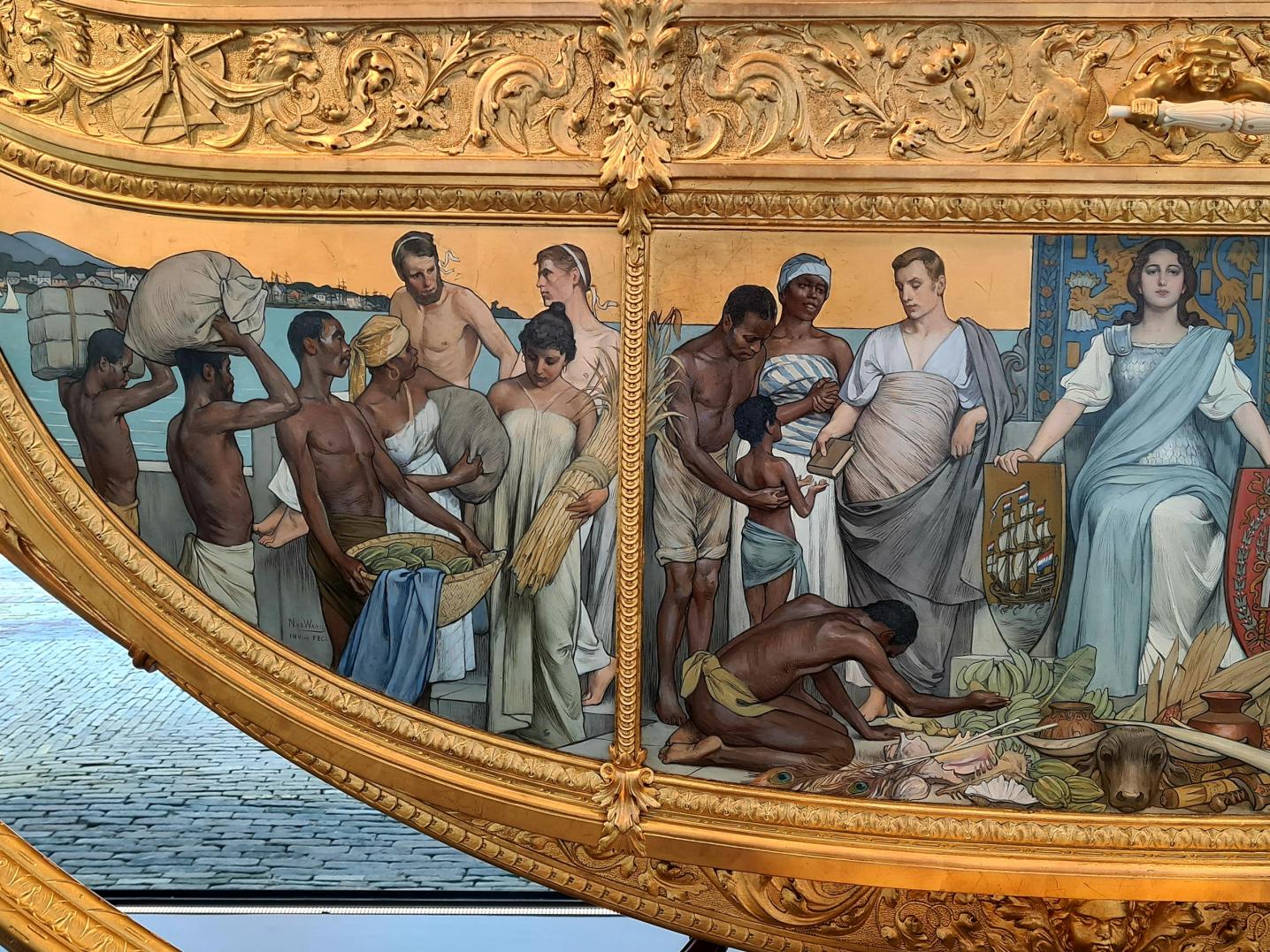
Critical perspective
During Museumnacht, curator Annemarie de Wildt and and director Margriet Schavemaker from Amsterdam Museum gave the four guests a tour through the museum. Barrena, as well as Donat, were impressed by the Golden Coach installation, featuring hundreds of cultural-historical objects and contemporary artworks providing a multifaceted view of the history of the Golden Coach and the current discussion about the glorifying depiction of colonialism on the left side panel of the vehicle.
Donat: “Such a critical perspective wouldn’t be possible in France. In Paris, exhibitions celebrating Napoleon are still highly popular. French public institutions struggle talking about topics such as France's colonial past from an intersectional perspective,” he states. Barrena concludes: “Important institutions, in national and international terms, should be able to reflect critically about their history. This constructive analysis produces new cohesions, reduces the mental borders we have and allows the population to imagine new scenarios that learn from the past.”
Comparing cities
Although he thinks Parisian cultural institutions are not that far in terms of inclusivity and diversity, Donat notices some recent changes that are hopeful. “Institutions such as Alliance Française are trying to be more inclusive and open-minded. They invited me to introduce my work through online seminars to an international audience.”
Barrena’s position towards practices of co-creation in his home city Madrid has become even more critical after his visit to The Netherlands. “The experience in Amsterdam made me conscious about the holes in the socio-cultural fabric we have in Madrid. Unfortunately, the promise of collecting in Madrid is full of empty words. Most of the cultural production is oriented towards aesthetic outcomes with mediatic impact. Cultural gentrification-free projects that try to involve the local population are normally considered ‘second class’. These kinds of understandings complicate the possibility of a healthier and balanced cultural field.”
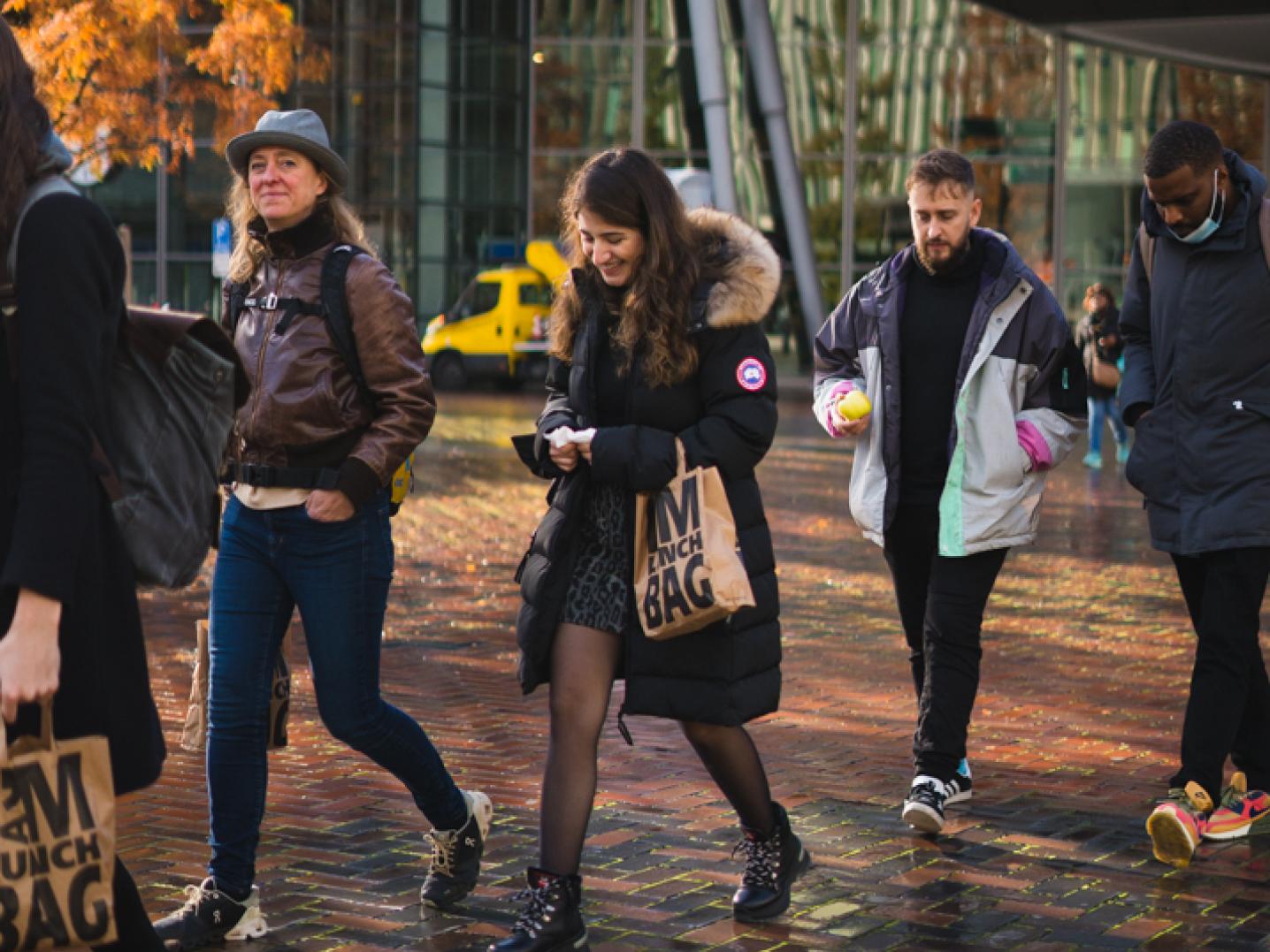
Great examples
The symposium gave our four international guests the chance to explore how different community building and co-creation projects in Amsterdam collect the memory and characterise the dynamics and soul of the city.
All of the four guests joined the walking tour through Amsterdam Zuidoost on 5 November. The practice of Kazerne Reigersbos stuck with Nathan Twentyman the most. “I was impressed by Kazerne Reigersbos because of how deeply it is rooted in its community. Hearing about the local Aunty Nel who comes to visit made me smile. They seem to have such open doors for any of their community to join in and have a say in what they do which is what creates the most effective projects in my opinion.”
Barrena shares this positive impression of Kazerne Reigersbos. “It was magical to see how a group of cultural actors from a peripheral neighbourhood re-activates an abandoned public building. This is one of the most interesting references of cultural work-form foundations I have ever seen. The interaction of Kazerne Reigersbos with institutional museums like Amsterdam Museum is an important first step to achieve a healthy cultural infrastructure in the city.”
Alpay was very much inspired by the way Imagine IC and CBK Zuidoost curate exhibitions and connect with the history and culture of their local communities. Alpay: “I admired the powerful voices and ideals that were represented through the exhibitions I saw. It brought a brand new perspective towards my own work as a young museum professional. In Turkey, museums took on the mission to strive towards the inclusive and democratic establishment of local communities only a few years ago.”
She was also positively surprised by the House of All Languages by OBA and the Story Telling Centre in Nieuw-West because she witnessed how within these projects there are no boundaries of what you can do or what audience you can reach. “It has actually prompted me to write my master’s thesis about co-creation!” she announces enthusiastically.
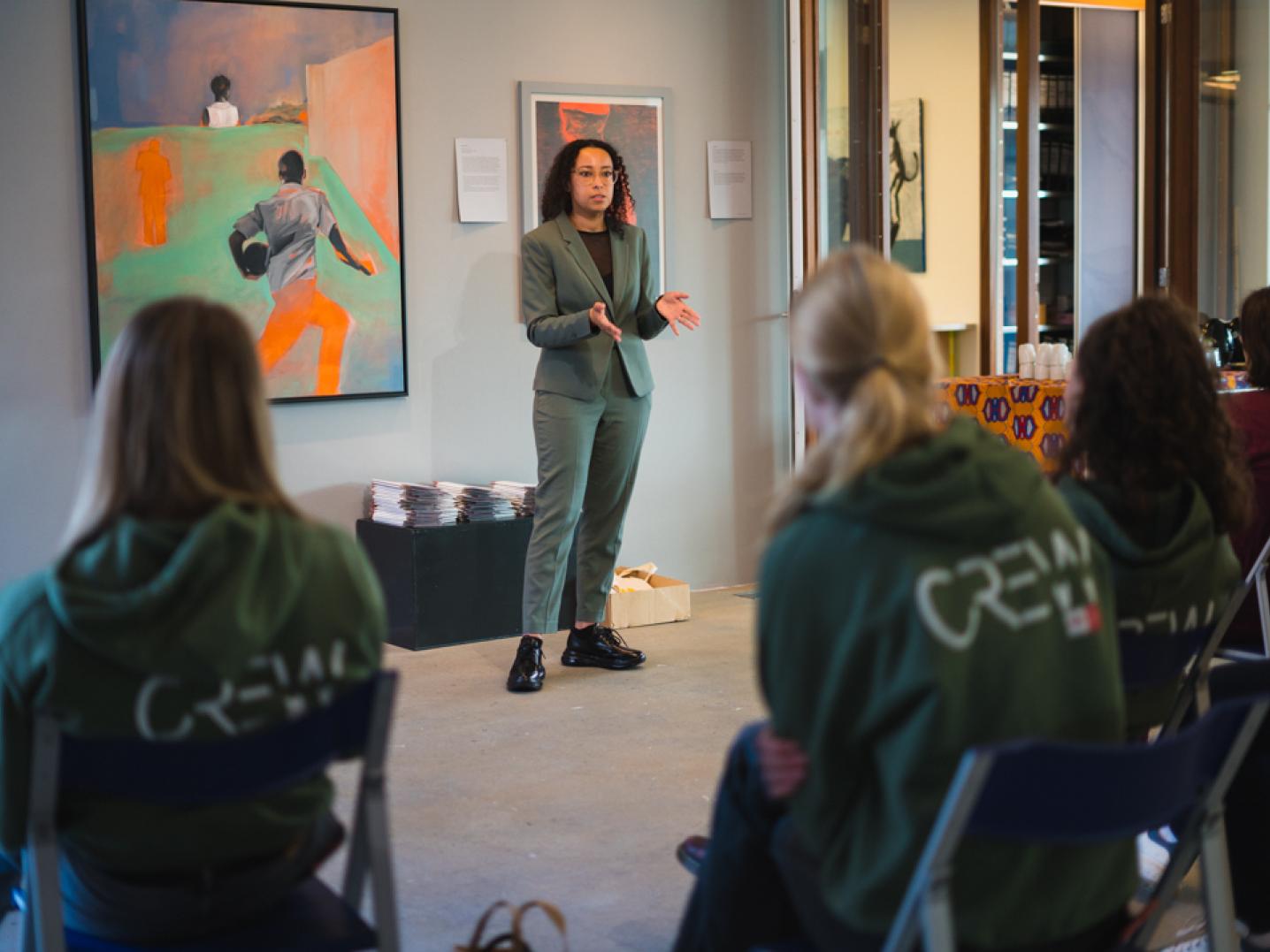
New connections
The two-day symposium offered the opportunity to connect with other guest speakers and cultural professionals. Alpay felt encouraged after meeting with so many people from her working field and hearing about their journeys. “I was also thrilled that our local initiative, the Young Museum Association, received so much positive feedback from Dutch professionals attending the symposium.”
Danielle Kuijten, acting director and co-curator at Imagine IC and chair of COMCOL (International Committee of Collecting at ICOM), invited Alpay and her Turkish Young Museum Association to a meeting of the COMCOL network of young museum professionals around the world. “From now on, the Young Museum Association will be joining the annual COMCOL meetings; such an exciting step that our small and modest association will be having contacts and counterparts internationally,” tells Alpay.
On the second day of the symposium, workshops about co-creation, storytelling and archiving were given by Stella Toonen, Fouad Lakbir and founders of The Black Archives. Donat joined the workshop given by Mitchel Esajas and Jessica de Abreu from The Black Archives. Donat: “I enjoyed the workshop with the Black Archives a lot. It was very inspiring, I wish I had more time to connect and interact with them and I wish we could do something similar in Paris.”
Nathan Twentyman is also pleased with the new valuable connections he made during the symposium. Twentyman: “I enjoyed speaking to Anna Stolyarova from the Street Art Museum as she has a refreshing take on arts and culture, brutally honest and realistic when it comes to accurately collect the city. I also really hope to work with DutchCulture again as they provided a really comprehensive look on the city despite the short timescale.”
Besides meeting Dutch cultural professionals, the international guests were also really pleased to get to know each other while exploring the city of Amsterdam. Barrena: “I admired DutchCulture’s approach to produce culture and share it with expected and unexpected partners. The international panel allowed me to start dreaming about new ideas with some connections abroad: Stella, Irem, Kévi and Nathan are new friends and give reason to create new projects in London, Paris or Istanbul. I look forward to continuing to grow closer to each other.”

